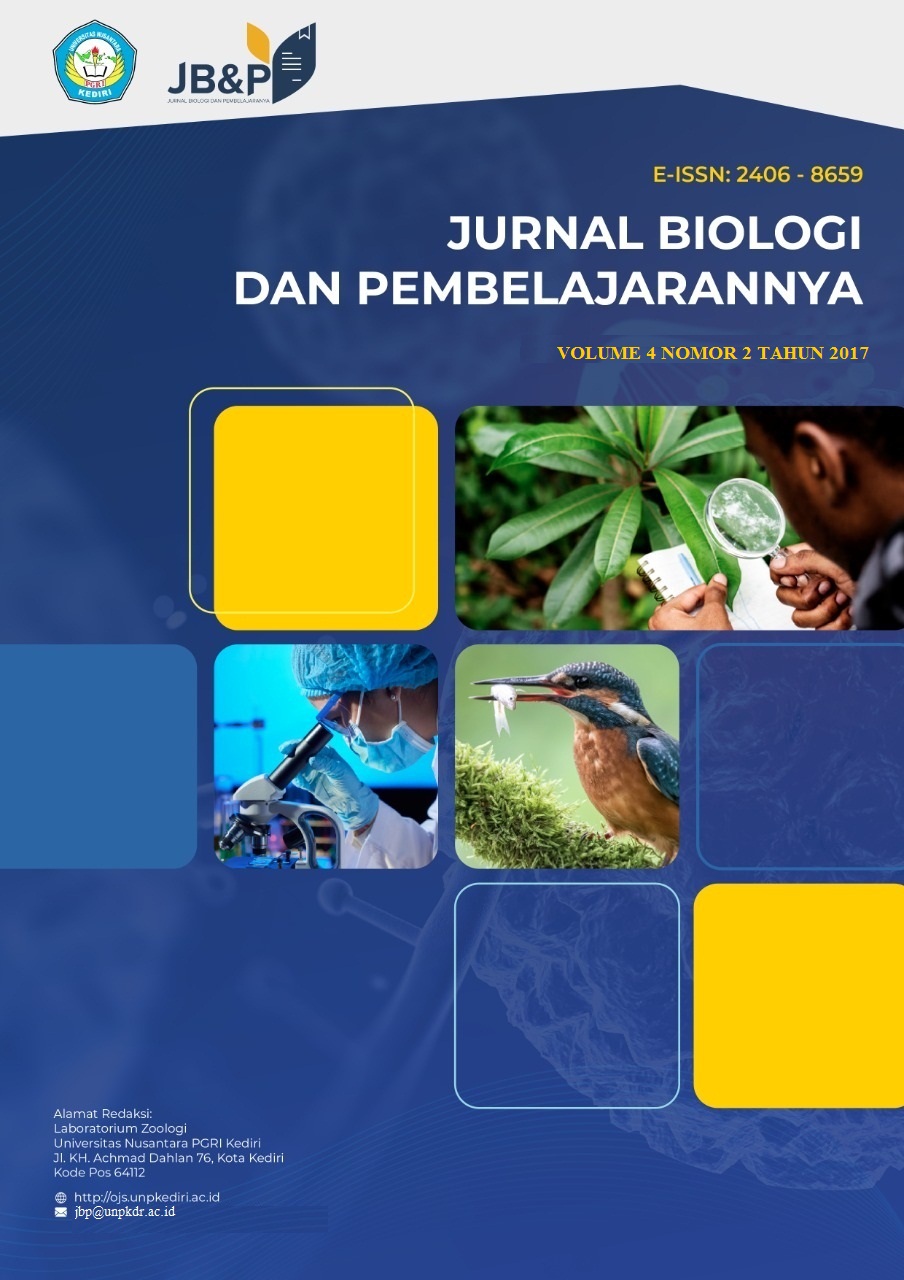ANALISIS PENGELOMPOKAN VARIETAS CENGKEH (Syzygium aromaticum (L.) Merrill & Perry)) BERDASARKAN KEMIRIPAN MORFOMETRIK DI PULAU TERNATE
DOI:
https://doi.org/10.29407/jbp.v4i2.934Abstract
Tanaman cengkeh (Syzygium aromaticum (L.) Merrill & Perry)) adalah tanaman identitas
provinsi Maluku Utara dan sampai saat ini tanaman Cengkeh masih menjadi salah satu
andalan komoditas pertanian di Ternate. Pohon Cengkeh yang ada sekarang ini diduga berasal
dari dua tempat yakni Zanzibar dan Ternate, sehingga kekerabatan diantara tanaman cengkeh
belum diketahui secara jelas. Tujuan penelitian ini adalah menganalisis kekerabatan antar
aksesi cengkeh yang terdapat di pulau Ternate dengan mengkontruksi hubungan
kekerabatan/fenetik antar aksesi tersebut berdasarkan karakter morfologi. Metode yang
digunakan adalah metode survey titik penyebaran cengkeh di Pulau Ternate yang dilanjutkan
dengan identifikasi dan observasi karakter morfologi antar sampel/aksesi. Data morfologi
selanjutnya di bandingkan dengan menghitung indeks kemiripan antar aksesi/varietas sebagai
Operational Taxonomic Units (OUT’s) untuk menghasilkan dendogram dengan metode
Unweighted Pair Group Method using Aritmethic average (UPGMA) menggunakan program
NTSYS 2.1. Hasil analisis terhadap 16 aksesi cengkeh menunjukan terdapat empat kelompok
utama tanaman cengkeh yakni: Sansibar campuran, Sulamadaha, Taduma dan Mando. Aksesi
P, yakni Cengkeh Afo keluar dari semua kelompok, kuat dugaan bahwa cengkeh Afo merupakan
tetua dari cengkeh lain.
Kata kunci—cengkeh, (Syzygium aromaticum (L.) Merrill & Perry)), ternate, afo.
Downloads
Published
Issue
Section
License
Authors who publish with this journal agree to the following terms:
- Copyright on any article is retained by the author(s).
- The author grants the journal, right of first publication with the work simultaneously licensed under a Creative Commons Attribution License that allows others to share the work with an acknowledgment of the work’s authorship and initial publication in this journal.
- Authors are able to enter into separate, additional contractual arrangements for the non-exclusive distribution of the journal’s published version of the work (e.g., post it to an institutional repository or publish it in a book), with an acknowledgment of its initial publication in this journal.
- Authors are permitted and encouraged to post their work online (e.g., in institutional repositories or on their website) prior to and during the submission process, as it can lead to productive exchanges, as well as earlier and greater citation of published work.
- The article and any associated published material is distributed under the Creative Commons Attribution-ShareAlike 4.0 International License













